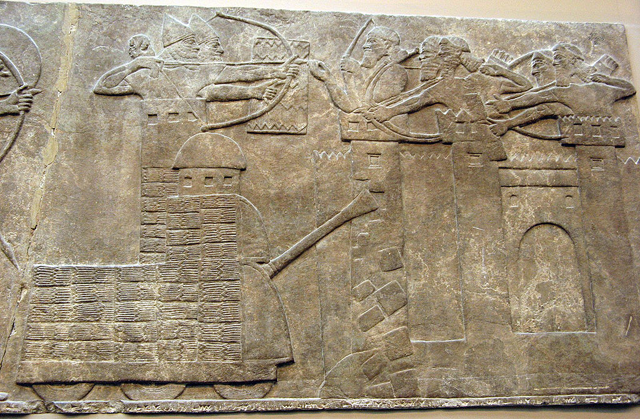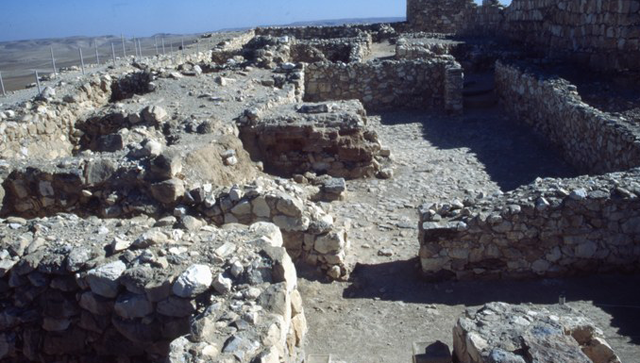You are here
Exploring use of sling in Bronze Age military strategy
By Saeb Rawashdeh - Nov 22,2024 - Last updated at Nov 22,2024

A Roman slinger depicted on the Trajan column (Photo of Wikipedia)
AMMAN — With the development of the first civilisations, the weaponry also improved and some of most popular weapons in the Bronze Age were sling, bow and shield.
This time we will discuss the impact of sling in the warfare of the Bronze Age.
“Of all the weapons available to the Bronze Age warrior, the bow and sling provided the greatest range and firepower, and these two long-range weapons played a significant role in siege warfare because they made it possible to suppress the efforts of defenders from the top of the walls or during sallies from their gates,” noted the professor Aaron Burke.
Although the sling was of considerable importance beginning as early as the 8th millennium BC, direct material evidence of its existence is limited since it was constructed from biodegradable materials, mostly leather.
"Manfred Korfmann observed that the absence of clearly identifiable sling stones or bullets has, in some cases, led to the sling being entirely overlooked.
This omission has been further compounded because the 'naturally formed missiles 'were also used by slingers and 'may never be recognised',” Burke underlined, adding that such objects might be no more than river pebbles or roughly shaped, fist-sized stones, rather than well-worked, symmetrically rounded stone projectiles that are more easily identified.
Nevertheless, reliefs and textual references inform us of the importance of slingers in the military ranks of Near Eastern armies during the Late Bronze and Iron Ages.
Burke continued that even though identifying the sling in the Early or Middle Bronze Ages in the Levant is equally problematic, there is some notable archaeological evidence for the projectiles used with it in the Levant and northern Mesopotamia during these periods.
"For example, numerous clay sling bullets of five different shapes have been recovered from the late third millennium site of Tell es-Sweyhat in Syria," Burke said, adding that these 'stockpiles' were found in structures adjacent to the western wall of the upper town.
Scholars experimented with such a slinger and it was effective within the range of 100 metres during dry weather. Sling bullets would remain intact even after the impact with the object and similar archaeological evidence comes from a large cache of baked clay sling stones found in court 22 of the temple of Dagan at Mari.
"Other sling bullets referred to as catapult projectiles were recovered from a storeroom of the Middle Bronze Age Western Palace at Ebla. Since there is no evidence for the catapult before the classical period, 13 these artefacts must, in fact, be classified as sling stones," Burke underscored. Their size has been compared to a ballista stone from a group found in theIron Age Phrygischer Tempel at which had a diameter of 13.7cm.
Moreover, such a suggestion seeks to compare the effectiveness of slingers with the successful employment of ballistae against walls, as for example during Alexander’s siege of Tyre, the historian said, adding that this suggestion is, however, anachronistic and ignores two important facts: On the one hand, no propulsion machines existed during this period with which to fire such projectiles, and on the other hand, slingers were unable to breach walls.
It is likely, therefore, that slingers employed an array of different sized projectiles, including large stones, against enemy soldiers.
Using larger stones would have meant, of course, that the slinger sacrificed the speed and accuracy of a smaller projectile, but would have gained increased mass.
The effect of this would have been an increased probability of inflicting casualties on the enemy despite a loss in accuracy," Burke said, adding that the choice between differently weighted projectiles was also available to archers, who used arrow heads of different weights.
Related Articles
AMMAN — Bronze Age architecture was characterised by city walls constructed from massive stone blocks. To overpower defenders and breac
AMMAN — The study of the ancient warfare is often connected with study of available weaponry and fortifications recovered by archaeologists.
AMMAN — Iconographic motifs help historians and archaeologists reconstruct the weaponry from the ancient period.


















